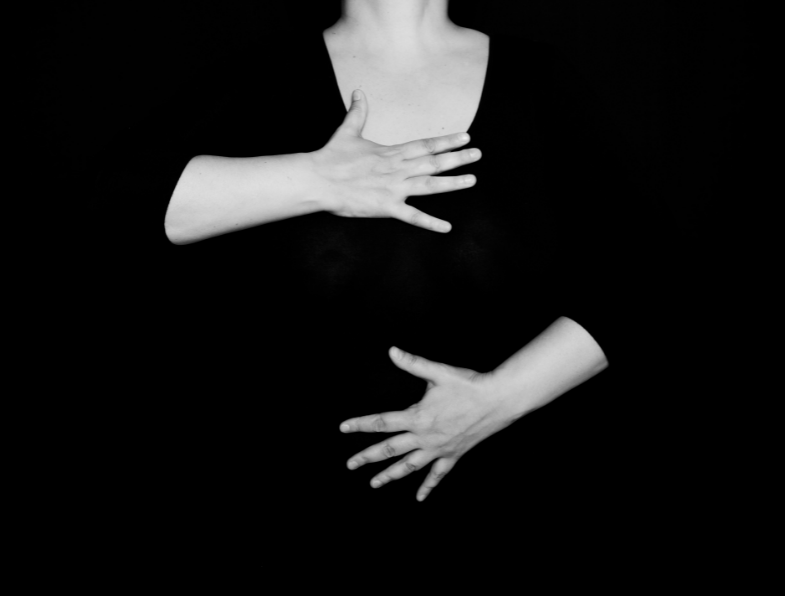We breathe about 22,000 times per day and, if we’re healthy, rarely think about it. On the other hand, when we’re stressed, we’re keenly aware of it, from our racing thoughts to our tight shoulders.
And we’re stressed A LOT; 55% of us report feeling stressed during the day. Work, finances, children, social issues, and future uncertainty can all lead to us feeling overwhelmed. The pandemic has increased stress levels, with higher reports of poor mental health, isolation, and increased worry and fear.
This stress and exhaustion can make coping seem hard or out of reach. But what if we could use a tool we already have, that’s free and effective? Our breath.
Mindful breathing helps us get more oxygen, lowers heart rate and blood pressure, reduces levels of stress hormones in our blood, and helps reduce muscle tension. It also encourages us to be present instead of stuck in our stressful thoughts.
While breathing techniques won’t eliminate our worries or the uncertainty of the future, they can help us control our emotional responses.
Check out these 5 breathing techniques for stress relief.
Breathing Techniques and How to Do Them
1. Belly Breathing
Belly breathing is also called diaphragmatic breathing because it requires us to use our diaphragm, a muscle below our lungs. When we breathe, it flattens to let our lungs expand and suck in air. This lets us take in as much oxygen as possible.
When we’re stressed, we take shallow breaths (which stops our diaphragm from flattening fully). And when we take shallow breaths, we feel stressed because we’re not getting enough oxygen.
To practice belly breathing and get enough oxygen, we can:
- Sit comfortably or lay on our back.
- Put one hand on our chest, and the other on our belly.
- Inhale slowly through our nose, allowing the belly to rise (our hand should visibly move upwards). Our chest should remain relatively flat.
- Exhale deeply through pursed lips (make lips into an ‘O’ shape), until the hand on our belly is in the starting position.
- Repeat for 5 to 10 minutes.
2. 4-7-8 Breathing
The 4-7-8 technique follows an inhale-hold-exhale pattern.
It may have relaxing effects that cause us to fall asleep.
To practice, we can:
- Sit comfortably.
- Empty our lungs by exhaling completely.
- Put the tip of our tongues on the roof of our mouths, right behind the front teeth. Keep it there for the entire exercise. This may feel weird at first.
- Close our mouths and deeply inhale through the nose while counting to 4.
- Hold our breath for 7 seconds.
- Exhale through the mouth slowly, while counting to 8. Exhale around our tongues, as it should still be touching the roof of our mouths.
- Repeat the exercise four times (beginners), and up to eight times (experienced).
3. Lion’s Breathe
Lion’s breath is a pranayama (breathing technique) commonly used by yoga practitioners. It’s said to help reduce both physical and mental stress. Also, it stretches and stimulates the face and throat muscles, increasing circulation. To practice, we can:
- Find a comfortable position, either seated (on the floor, kneeling, on a chair, etc.) or standing.
- Inhale deeply through the nose.
- Exhale through the mouth. While doing this, we open our mouths wide and stick out our tongues all the way. Imagine trying to stretch it down to touch the chin. Make a “haaaa” sound when exhaling, like when we try to fog up a window or clean our glasses.
- Inhale while returning to a neutral face, tongue in the mouth, and eyes closed.
- Repeat at least 3 times.
Each exhale should be forceful, but not so much that we strain our muscles.
This exercise may feel silly at first and isn’t the most discreet. It may be helpful to set time aside for solo practice, away from distractions.
4. Alternate Nostril Breathing
Alternate nostril breathing is another yoga technique used to relax the mind and body. Like 4-7-8 breathing, it follows a pattern of inhale-hold-exhale. To practice, we can:
- Sit comfortably with our left hand on our left knee.
- With our right hand, use the thumb to cover our right nostril.
- Inhale deeply through the left nostril.
- Pause and hold breath for 1 second, uncover the right nostril.
- Cover the left nostril with the ring finger.
- Exhale through the right nostril.
- Inhale deeply through the right nostril.
- Pause and hold breath for 1 second, uncover the left nostril.
- Cover the right nostril with the thumb.
- Exhale through the left nostril.
This is one cycle. We can do 5 to 10 cycles. Here’s a beginner-friendly video showing the technique: https://www.youtube.com/watch?v=8VwufJrUhic
5. Box Breathing
Box breathing is a technique used to promote calmness and focus. It’s called box breathing because we follow four equal steps, and often visualize breathing along the edges of a box.
It follows an equal inhale-hold-exhale-hold pattern.
This exercise is used by the Navy SEALs, who are often in high-stress situations, to reduce stress.
To practice, we can:
- Comfortably sit, lay or stand.
- Inhale slowly and deeply while mentally counting to 4.
- Hold our breath while counting to 4.
- Exhaling slowly and completely while counting to 4.
- Holding our breath while counting to 4.
- Repeat until calm.
Summary
Breathing is a free stress reduction tool that’s always with us. It lets us regulate our body’s response to stress so we can cope better. Mindful breathing helps us get more oxygen, lower our blood pressure, and focus on the present moment.
Sources:
https://www.lung.ca/lung-health/lung-info/breathing
https://www.webmd.com/balance/what-to-know-4-7-8-breathing#091e9c5e821c08eb-2-6
https://www.yogapedia.com/definition/6746/lions-breath
https://www.youtube.com/watch?v=xdUyHPa66A4
https://www.health.harvard.edu/healthbeat/learning-diaphragmatic-breathing
https://www.healthline.com/health/alternate-nostril-breathing#when-to-use

